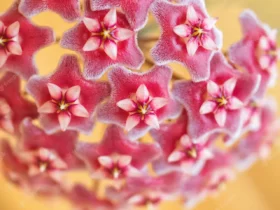Snowdrops (Galanthus) are delicate, bell-shaped flowers that emerge from the cold winter ground, symbolizing the arrival of spring. With their dainty white petals and green markings, these charming flowers are among the earliest to bloom, adding a touch of elegance and hope to the winter landscape. In this article, we will explore the enchanting world of snowdrops, delving into their appearance, symbolism, habitat, and the joy they bring as the first signs of spring.
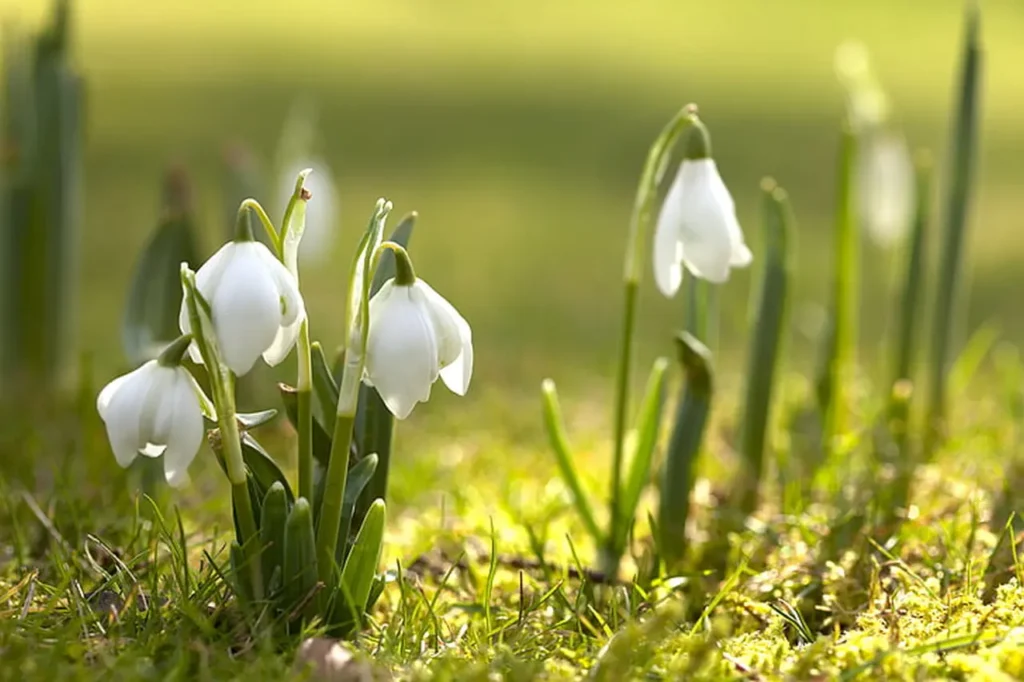
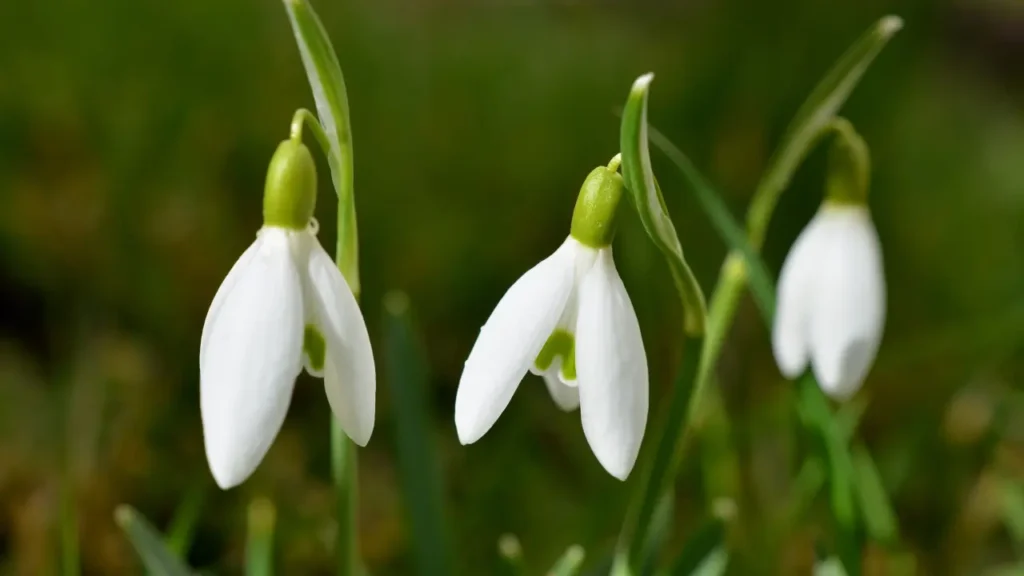
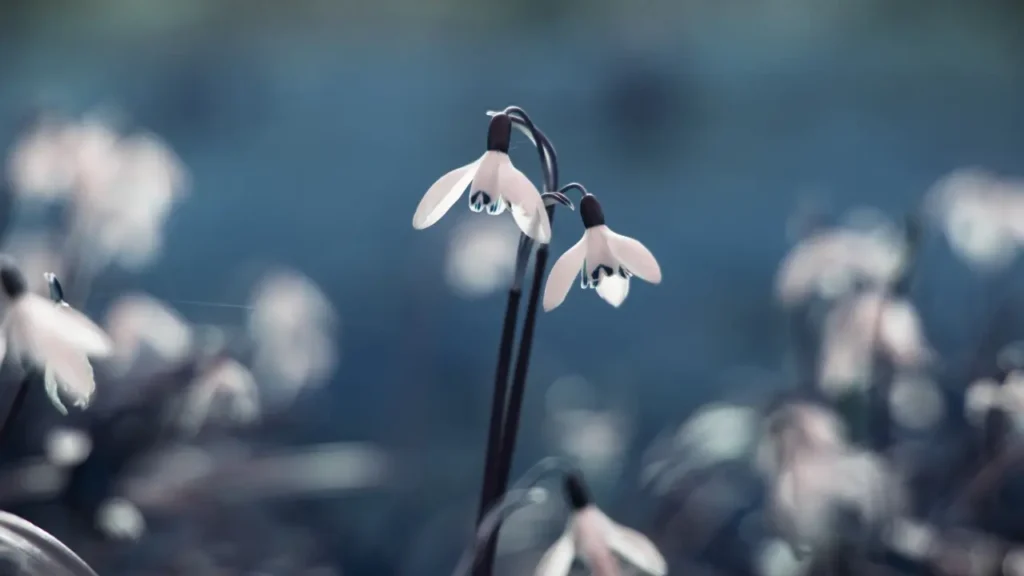
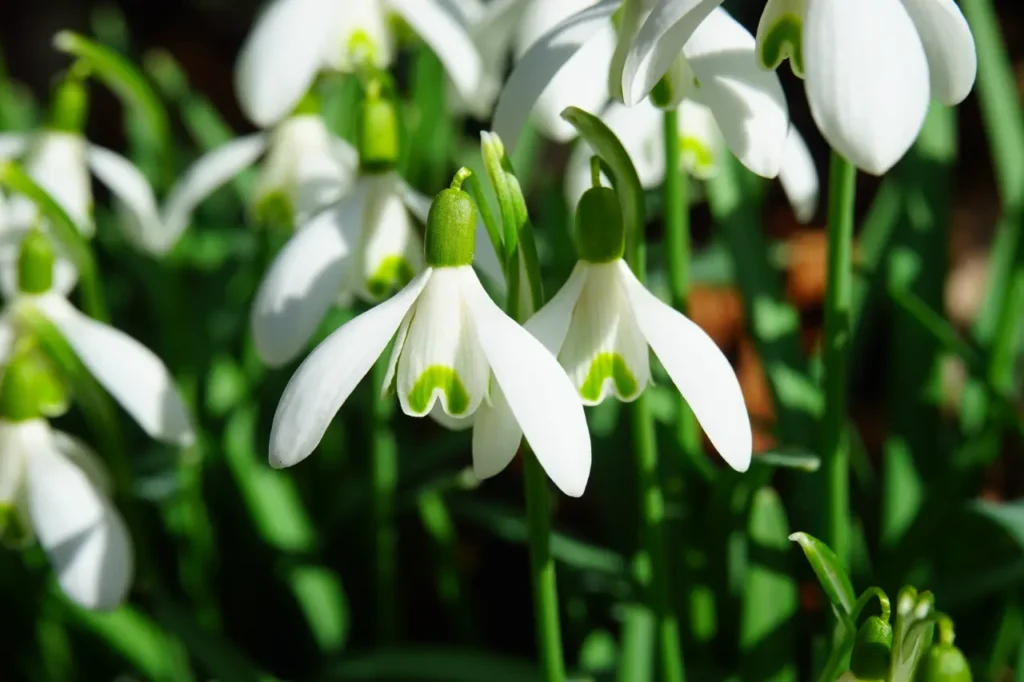
Appearance and Characteristics
Snowdrops are small, perennial flowers characterized by their nodding, bell-shaped blooms. Each flower features three outer petals, called tepals, which are pure white and elongated, and three inner petals, often shorter and marked with green or yellowish-green patterns. These delicate blossoms hang from slender stems, emerging from basal clumps of narrow, strap-like leaves. Snowdrops typically reach a height of 4 to 6 inches (10 to 15 centimeters) and bloom from late winter to early spring.
Symbolism and Cultural Significance
Snowdrops hold symbolic meaning in various cultures and are often associated with purity, hope, and the renewal of life. In Western cultures, they are seen as symbols of new beginnings, representing the arrival of spring after the dormant winter months. In folklore, snowdrops are believed to bring good luck and protect against evil spirits. These flowers also hold religious significance, often used in Christian traditions to symbolize the purification and spiritual rebirth associated with Candlemas, a holiday marking the presentation of Jesus at the temple.
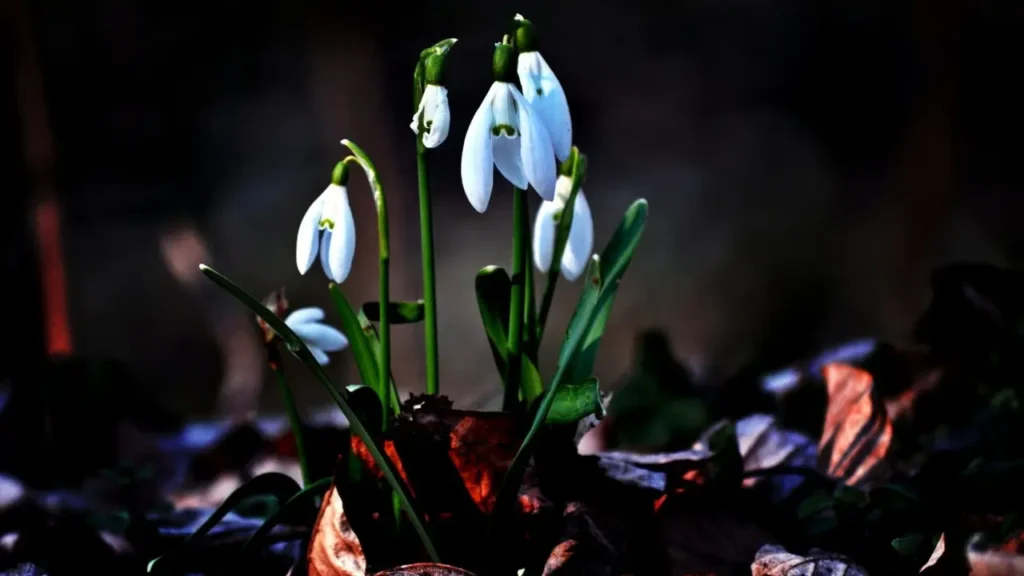
Habitat and Distribution
Snowdrops are native to Europe and can be found growing in woodlands, meadows, and gardens. They thrive in moist, well-drained soil, preferring partially shaded areas beneath deciduous trees. Snowdrops have naturalized in many regions beyond their native range, including North America and parts of Asia, where they continue to grace gardens and natural areas with their delicate beauty.
Cultivation and Care
Snowdrops are a popular choice among gardeners and can be cultivated in various settings. They are best planted in the fall, as their bulbs require a period of winter dormancy for proper growth and flowering. These flowers prefer cool temperatures and moist, fertile soil. They can be grown in garden beds, borders, or even in containers. Once established, snowdrops can naturalize and form expanding clumps, creating a carpet of white blooms in early spring.
Early Blooms and Conservation
One of the remarkable qualities of snowdrops is their ability to bloom even in the harshest winter conditions. Their emergence signals the end of winter and the beginning of spring, bringing a sense of anticipation and renewal. However, climate change and habitat loss pose challenges to snowdrop populations in their native habitats. Conservation efforts focus on protecting their natural habitats, preserving woodland areas, and promoting responsible cultivation practices to maintain the delicate balance between human enjoyment and the preservation of these cherished early bloomers.
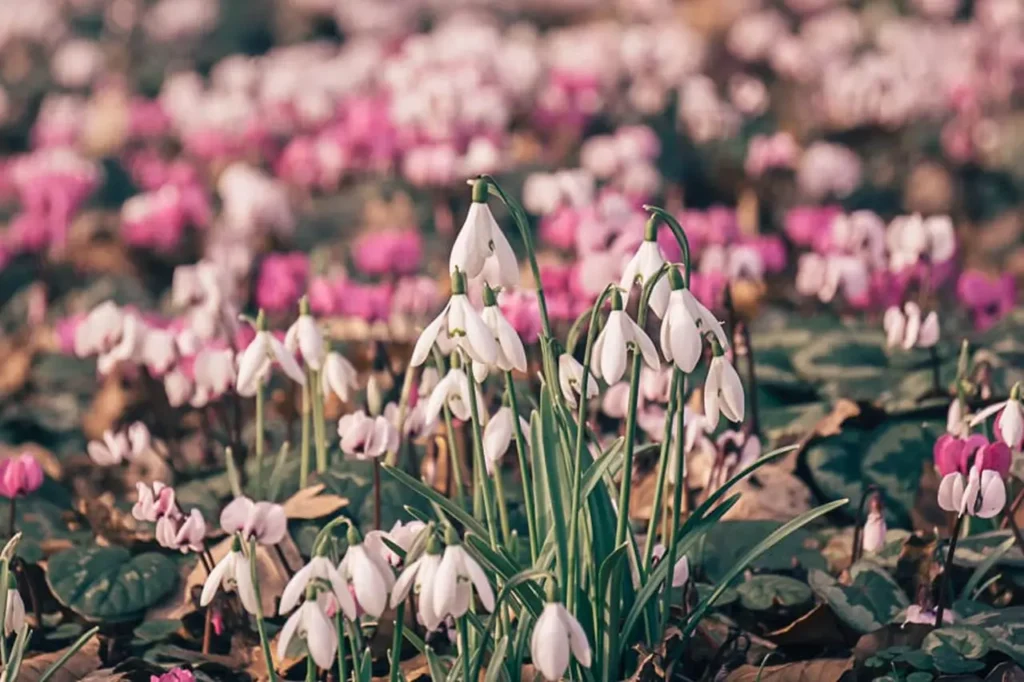
Snowdrops are gentle yet resilient flowers that brave the winter cold to announce the arrival of spring. Their delicate white blooms, tinged with hints of green, bring hope and joy after the long winter months. Whether found in gardens or in the wild, snowdrops captivate with their simple elegance and symbolic significance. As we cherish the delicate beauty of snowdrops, let us also embrace the lessons they teach us about resilience, renewal, and the constant cycle of nature.
